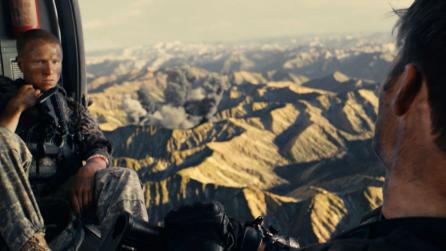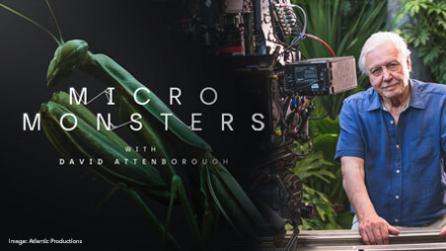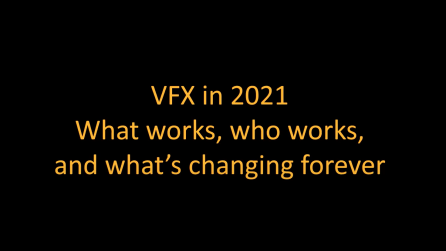The camera loves Mark Pinheiro, and the sentiment is undoubtedly reciprocated.
Whether he’s in front of the lens or behind it, Mark gives both his performances and productions the Midas touch to create something truly stunning.
Actor, director, educator, visual effects compositor: just a few hats he’s worn during his thirty years’ experience across stage and screen. Born and raised in London, Mark’s provenance in the industry has led to him heading up his own VFX studio, The Sex Pixels, with a recent cap in his feather counting as VFX work on Christopher Nolan’s TENET.
This comes after a six-year stint at Escape Studios, where he spent a large portion of his time training up the vast majority of the London VFX compositing community in Nuke. An early adopter of the compositing tool circa 2008, Mark's mastery of the compositing process and his eclectic filmmaking experience allowed him to create the most successful course of its kind in the world, inspiring countless artists ever since to explore their creativity and make a name for themselves in visual effects.'
In 2020, as the Black Lives Matter movement gathered steam, Mark spent his summer building his role in activism and sharing his experience working as a black artist in the predominantly white world of VFX. He appeared on AccessVFX’s podcast BAME Industry Connect 1, and Foundry were delighted to host him recently in our webinar Working in VFX - Black Perspectives.
Keep reading to explore Mark’s unique and varied career—charting his journey into the world of VFX, experience teaching and using Nuke, and the opportunities for change he foresees in race relations—both in the UK and beyond.
Q: What inspired you to get into visual effects?
A: The Classic Cinema in Tooting Bec was located on the corner of my road so I literally grew up like the kid from Cinema Paradiso, but my interest in film was sealed in place when I was eight years old when my mother—a night nurse—used to sleep during the day. During the summer holidays she would send us around to another nurse friend a few blocks up the road, as she was an early adopter of a video cassette player. She was from St Lucia and her house was dark due to a conservatory at the back and was decorated full of Voodoo paraphernalia.
We walked in while George A. Romero’s Dawn of The Dead was playing mid-flow which she recognised as a comedy and thought it would be cool for kids to watch. I sat down and was exposed to zombies for the first time and all this carnage on the screen; dead people eating live people and I just couldn’t bear to look at it, so I pretended I was looking at the screen while I was really looking to the side at the wall to the right of the TV set.
Once I was told it was all make-believe and it was all being recorded, from that day forward I wanted to be the guy behind the camera, because being behind the camera was safe! So, from eight years old I’ve always thought about why the camera moved the way it did and what the guy behind the camera wanted us to look at. With this mindset in place the next films I watched was a double bill of Star Wars and The Empire Strikes Back at the Odeon Cinema in Streatham. I remember walking out after 6 hours of cinema—it was dark and I just looked up into space at a starry night sky, knowing my life had changed forever.
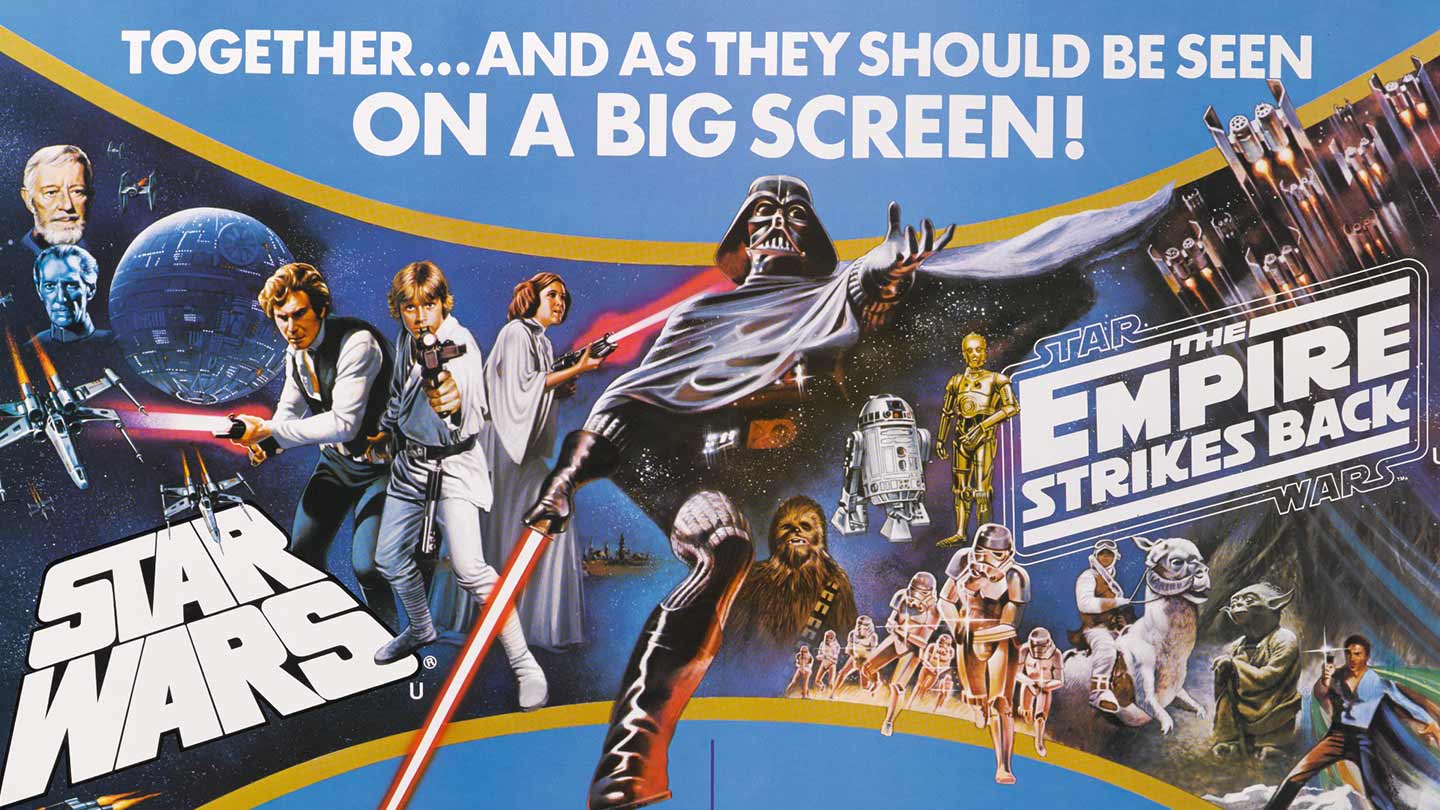
Q: What projects are you most proud of, and why?
A: There’s been a lot, but I actually only identify with a few.
Blade II: Bloodpack
Blade II makes the list because it was the first VFX film I worked on that I actually enjoyed watching.
TENET
A mention for a VFX project from this year, Christopher Nolan’s TENET at DNEG. If finally getting the chance to work at DNEG on a Chris Nolan project wasn't enough, the fact that this was Nolan’s “Bond movie” made it special. That he had cast a black actor in the James Bond-like role during the BLM uprising made it something significant. That it was the film that was set to re-open cinemas, gave it importance and that he refused to dumb-down in the crafting of a very ambitious bootstrap/Grandfather Paradox/Palindrome of a movie was so very much up my street that I couldn’t have been happier to have being involved. The film is a masterpiece. Chris Nolan is a man who possesses genius.
Escape Studios Compositing Course
Although not a project as such, all of these shows will still pale in comparison to the years I spent in charge of the compositing course at Escape Studios teaching and helping people to build a life for themselves. We helped people there. I performed the tests that setup the Escape Pods that brought in outsource work from the post houses with Matt Foster and a handful of other artists while they were still just graduates. Bea Harris would take the students on after I’d finished with them and find placements for them, giving them their first jobs. It was a well-oiled machine. Working alongside Lee Danskin and the guys there now running Escape Technology was the first time I’ve ever felt appreciated. Even today they still are the family that really took in this exiled orphan and gave me the chance to be the best I could. It made me want to do them proud.
Q: Given your experience and provenance in the VFX industry, what tech trends have you seen emerge over time, and how have these affected your approach to projects?
Frozen Time / Time-Slice Photography
This needs no introduction. For the masses their first exposure to this technique was probably The Matrix. But I saw an episode of the BBC science and technology show Tomorrow’s World in 1993 which had a guy called Tim Macmillan showcasing his shed-built pin-hole camera system which he had been experimenting with as far back as 1980 when he was still an art student at Slade Art College, and the film that he made using this system was called Ferment. On seeing this my mind was genuinely blown.
In 2002 I met Tim’s brother Callum who became the drummer in our electronica band and he was impressed that I remembered Tim’s commercial for Capital Radio titled ‘London’s Static Without it. Callum told Tim to hire me as a compositor for one of Tim’s films. For me, it was like being in the same office with Stanley Kubrick. I’ve since learnt how this Silhouette-to-Shape process, a form of cubism if you like, the ability to record multiple points of view at the same time, was realised as far back as the earliest days of photography, and how those early papers even now inform everything from photo-grammetry to where Callum has continued carrying the torch by taking the company into 4D capture with ‘Dimension Studios’. I’ve been working with Timeslice for over 18 years now and they hired me as a director for a period where I found myself becoming a multi-camera array specialist, taking me on-set and discussing Time-slice shots with Michael Bay for his feature production 13 Hours: The Secret Soldiers of Benghazi. I still find it fascinating.
Nuke
Big-up to Foundry because Nuke deserves its place among the big trends. Nuke made a seismic difference to the way we worked in production. For 3D artists working early in the pipeline, they cheekily exploited the idea that it could now all be done in comp and so there was a significant amount more work given over to the comp dept. In some cases, whole entire shots. For Martin Scorsese’s Hugo I constructed sets in Nuke, lit, textured and shaded all of the 3D environments for my shots entirely using Nuke’s 3D workspace.
We also owe it to Nuke for teaching us a thing or two about color space. The color scientists in the big post houses were aware of sRGB gamma and only the 3D lighters who took the Zap Andersson fxphd course would later be introduced to it. But for the vast majority of companies there was always a moment where the quicktime render didn’t look the way it should, and nobody would have any idea as to why that was. Nuke fixed that.
Footage courtesy of Lexhag VFX
Camera Projection
I think this one was so popular it was the Rubik’s Cube of the compositor’s playground. In the early days we were doing camera projection in Maya when it was needed—I did a 734f clean-up on the Trojan Horse for Troy at MPC that we set up a projection for in Maya. We tried everything in comp to solve it, but it wasn’t working as well, and projection clearly was the solution we needed.
When Nuke introduced camera projection for the compositor it was like the dawning of a new age. Everybody wanted to do camera projection even if the shot didn’t need it. It also meant that we needed a camera to project and so if the shot wasn’t listed as a 3D shot—and therefore no camera was created—then the compositor would have to create a 3D camera themselves. Now all plates are 3D camera tracked, and all compositors are aware of how to build a 3D camera. Well, nearly all of them.
HDR Imagery
HDR images created using bracketed exposures, in particular lat-long photography in conjunction with global illumination, made a big big difference to achieving photo-realistic lighting for the CG-into-live action shots. A well captured set of spheres or bracketed fish-eye lens exposures saved lighters and compositors versions of iterations in trying to massage a manually lit bit of CG into a live action plate. It became clear; if you want your CG to look CG, then light it with CG lights. If you want your CG to look photo-real, then light it with a photograph.
Deep Compositing
I’ve worked on only a handful of deep comp projects as for a while this required such a large amount of render resources that it was reserved for the big companies and then only for the shots that really needed them. Today it’s spat out as easily as a depth pass. Depth compositing was around as early as 2000 but it never worked that well due to anti-aliasing edge issues, but since a decade now thanks to Weta’s collaborations with Foundry, we’ve been enjoying the benefits of deep comp even if the speed and weight of the files can sometimes be a pain in the butt. It’s one of the reason’s we’re seeing comps displaying a greater degree of verisimilitude.
Q: How does working on episodic content differ from working on one-off feature films?
A: I spent the better part of last decade working on episodic TV shows. Due to these productions being smaller and faster than features, my experience here put me closer to the editorial department than I would normally find myself on for most film shows. The VFX requirements will vary from show to show, depending predominantly on the genre of the show. On a show like Lost in Space, for instance, there can be a large count of big VFX shots in every episode in order to depict fantastical sets or environments.
On a show like Game of Thrones, which used a lot of real sets and locations, what we found was that across each series there was a pattern from being a high shot count on a few select episodes to low on others. The first episode would be VFX-heavy, involving a little taster of things to come to launch the series and would attempt to present a spectacle to hopefully woo and hook the viewer. The VFX requirements would then ramp down until another heavy episode somewhere around the midpoint of the series. To finish there was always a massive Episode 9 for the Act 3 climax. For me it was series 6’s Battle of The Bastards, at the time the biggest battle ever filmed for television. Episode 10 is usually an Act 4 epilogue show using standard scene drama to wrap up storylines or to reveal exposition in order to setup the cliff hangers for the next series.
Alexis Haggar, an ex-student who runs the company Lexhag, are specialists in episodic TV and in particular pick up a lot of period drama work. They will often send me on set to supervise a shoot and the work I do for them is usually environment augmentation, such as Downton Abbey’s Christmas 2013 episode where we aged Buckingham Palace to look like the 1927 Coronation year. We performed the whole workflow in Nuke.
Q: Do you use Nuke for all of your projects? What problems does it solve?
A: Nuke really is my go-to compositor. I like the idea of being software agnostic and using whatever package can produce the best results, but in truth your muscle memory has a big say on just how productive you can be with the time that you’ve got to complete a project. If I can try to use Nuke to solve the problem, then that’s my first choice of software.
Footage courtesy of Lexhag VFX
Q: Can you talk about some of the Nuke features you find most useful in your work, and why?
A: What I like about Nuke is the common-sense approach to getting any task achieved. Its visual programming workflow really makes sense to me. I love its color space management, I love its 3D workspace and its ability to create depth estimation for a 2D image.
One thing I try not to talk about much—as I’d always hoped to get around to doing a tutorial for it, since I’ve never seen a tutorial on the matter—is the different spaces available for you to use. We work primarily going back and forth in 2D and 3D space, with the occasional jaunt into UV space, or lat long space, or a cubic space. But from a mathematical point of view I often think that there is an opportunity to solve spatial problems moving data from space to space, using these spaces a lot more than we traditionally do. Having said that, somebody will now probably begin working on putting out a tutorial on how to exploit all the different mathematical spaces available in Nuke!
Q: What is your favourite feature or update in Nuke 12?
A: I’m a guy that likes to keep things simple so I was happy enough that a fresh installment of Nuke 12 appeared earlier this year while (working from my studio on the show Outlander using Keentools GeoTracker) to fix all of the problems I may have been experiencing with Nuke 11. It ran quicker and smoother than Nuke 11 and the UI updates created a smoother user experience. I’m glad Nuke finally introduced an Edge Extend node as I always thought that that was missing from the toolset.
I’m working with 3D much more now so I’m excited to see how well Nuke handles USD files which I’ll try out on a personal project first before I suggest it for a production. Most of the recent shoots I’ve been on have seen DOP’s preferring to use the Sony Venice Cameras so seeing that there is updated support for these cameras is reassuring that Nuke is keeping up with the changing trends in the industry. And if lockdown continues, then I’m keen to see how SyncReview can play its part in collaboration with other team members.
Q: Do you have any wider tips for artists looking to break into the VFX industry? What type of opportunities should artists be looking for?
A: If you’ve read some of my earlier answers, then you’ll see that I’m a big fan of the democratisation of film and video production. Today, the opportunities are vast for up and coming artists. Everybody has a brain so when it comes to generating ideas, here's a quick 3 step plan for you: if you can think something, then you can say it, and if you can say it, then you can write it. So, start writing out some ideas.
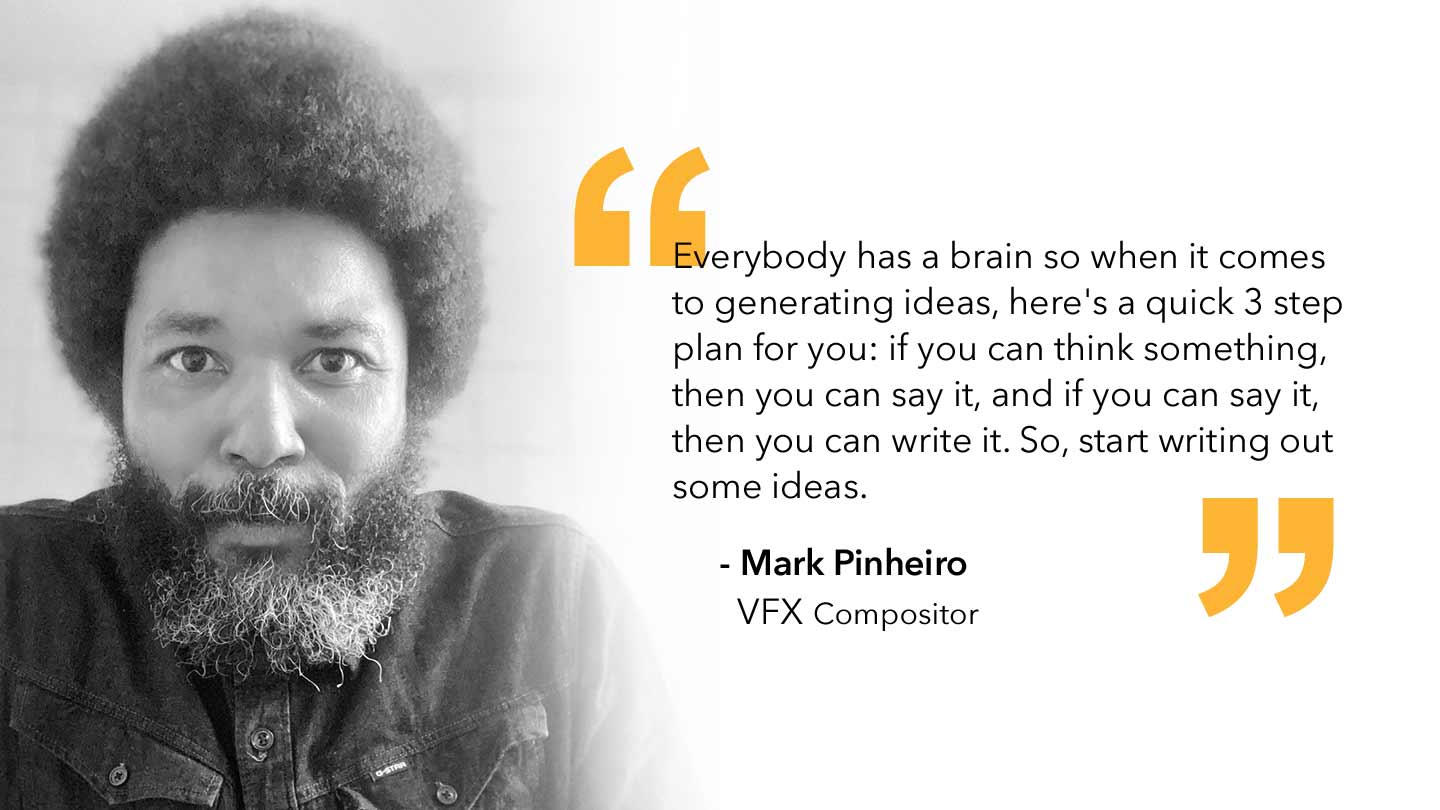
Everybody has a phone and most phones can shoot better quality video now then we were broadcasting in the 90s. So, go out and film something. If you don’t want to do that then there is footage on the internet you can use.
There are software manufacturers like Foundry that have been kind enough to provide you with a version of the software that you can use for free to practice on and to learn on and to even produce results with. Other manufactures are providing you with unlimited use of their kit for absolutely free. Take advantage of that opportunity. Youtube is like a University LMS now; there are so many free tutorials out there if you’re willing to learn that the only thing stopping you is time and dedication, and you can change that by taking yourself more seriously.
There is a whole pipeline mapped out for you today in 2020. So, my question to anybody wanting to get started is, what are you waiting for?
Q: You are such a well known Nuke Trainer in London—can you describe some of your notable experiences teaching?
A: I took my first class up onto the roof of the building of Westbourne Studios like a moment from Dead Poet’s Society when I’m sure it was out of bounds, but I just really fancied seeing the view. The class after that we gave everybody nicknames after characters from Goodfellas that have still stuck today—shout out to Mickey Eyes and Johnny Roastbeef if they’re reading this. I used to act out what happens to a pixel during the premultiplication process and the masking lessons like it was The Muppet Show because that was the easiest way to explain it. I taught Tara Roseblade the first 2 days of the course and then pretty much after that, I didn’t really need to teach her anything else. Everybody asked her how come she was so good, and she said ‘because Mark Pinheiro taught me how a pixel works’. That was the nicest compliment of my whole teaching career. I also have the pleasure of saying that I trained Victor Perez!
Footage courtesy of Lexhag VFX
Q: You have recently been contributing to the #BlackLivesMatter movement recently with Access VFX and our recent panel on Black Perspectives in VFX. Do you feel there’s a real opportunity for change here?
A: There is always opportunity for change. The question is, will it happen? We have such a mix of races representing our national community in the UK, so as a nation with a rich history for educating the world with our language and culture, we have all the ingredients to set an example for the rest of the world to follow in how we move forward in conducting ourselves as a planet.
We talk about systemic racism, and to a degree, this term lets the individuals demonstrating racism off the hook because the word guides our thoughts to look at it from an institutional level. But there has been a concerted effort by the white population of this country—on an individual basis for each person to if they choose—to play their ‘not on my watch’ part to suppress us for quite some time now, and let me add now that that includes anybody else that wants to stand with the negative views cast upon Black people in this country.
Going back out into the world after lockdown, you’ll now have to entertain the argument for all lives matter, or even not all lives matter for some when you consider paedophiles and rapists. When you’re bringing awareness to the plight of dolphins or endangered species you don’t dilute the point by saying all animals matter, you specifically point out that the snowy owl or the yellow breasted bunting or the west African elephant being killed for its ivory is in danger. To say all lives matter or not all lives matter is to deliberately obfuscate the point of bringing awareness to the plight and struggle of Black people.
All of the post houses have a scheme for other artists to suggest people they think would be good to work there. It’s a scheme that’s been in place for a long time. For some, it can be used as a way to make sure they only suggest and employ the people that they want. But at the same time, that scheme could be used by the workers to suggest people getting caught in the net and could be used to allow for greater balance. That’s an example of using white privilege to open the door and to give minorities a chance. So, if you have a friend or know someone in the industry and you’re having trouble finding work and they’re not even suggesting that they can put in a word for you, then you really should be asking them why.
We’ve reached lockdown now and life has hit a pause button. Our time really is our own now. It’s a perfect time for what Alan Moore would refer to as Solve et Coagula—to deconstruct what is, and to reconstruct into a new synthesis. If you’re someone who’s ready to change then you can do worse than to read Russell Brand’s book Revolution and Me and White Supremacy by Layla Saad.
Lockdown has been an incredible experience for everybody. Many have struggled while others have sailed through. Personally, I was built for this but either way I think we have all had time to take a look at ourselves. Going forward I hope to do more broadcasting and to give more people a voice to be heard, especially in support of the ones who didn’t make it through and aren’t considered successful like me. It’s the perfect time for a change and a chance to plan for a better tomorrow. The time couldn’t be better. When the world re-opens ask yourself: just what kind of person do you want to be?
Check out Mark’s full list of projects on his IMDB page.
